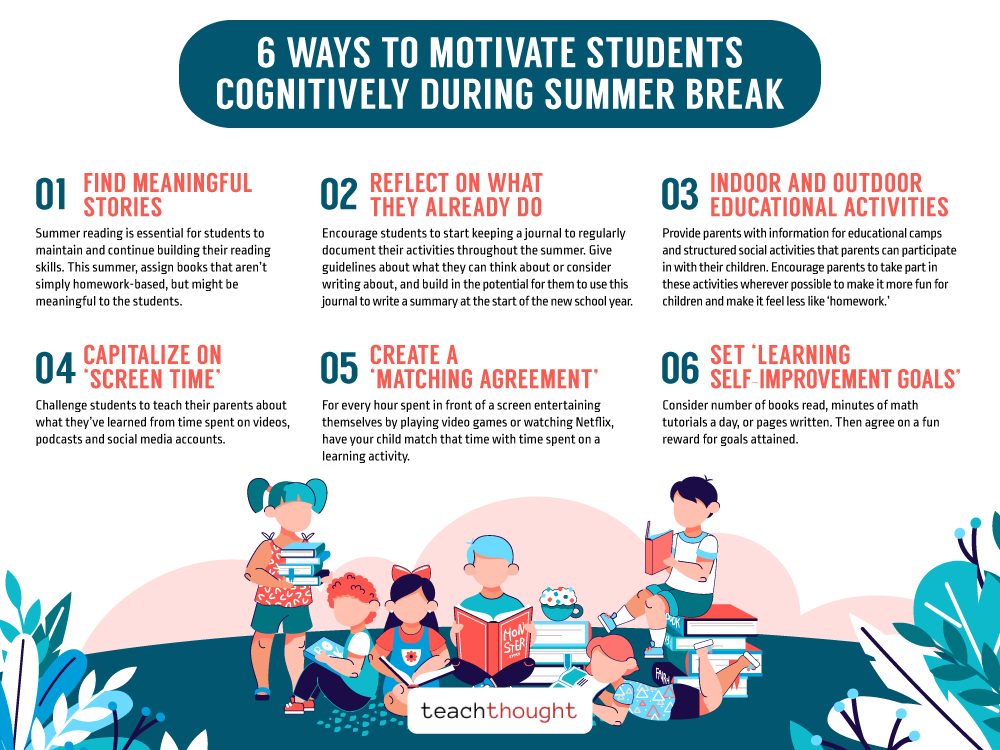How To Motivate Students During Summer Break
contributed by Dr. Pamela Roggeman, academic dean at the University of Phoenix College of Education
For decades, we have romanticized the idea of children taking the summer off to enjoy warm weather, summer camps and family vacations. Should we rethink summer learning loss?
Considering recent (and current) events involving COVID, social justice, and more, the context of ‘learning’ is different–and this is especially true during the summer. Instead of asking, ‘How can we slow their loss of academic progress?” we might asked instead, “What do children need this summer?”
Many of us have our own memories of waiting eagerly for the final bell of the school year to ring, signaling a months-long reprieve from schoolwork. But in reality, these lengthy gaps spent away from the scholastic environment could have a negative impact on students’ academic progress–and their life the ‘other 9 months’ of the year.
See also 4 Things Every Student Should Do Every Day
Researchers who study education call this phenomenon ‘summer slide’—the tendency for students to lose some of the academic gains they made during the previous school year once summer arrives, when they are no longer in a structured academic environment.
Time away from school (in whatever form, from remote teaching to in-person classrooms) doesn’t just mean progress stops—for many students, they actually regress and lose some of the progress they’ve made. By fifth grade, summer learning loss can leave students 2.5 to 3 years behind their peers. Summer learning loss in the elementary school years alone accounts for at least half of the ninth-grade reading achievement gap.
Americans have mixed feelings about summer slide, as well as how to address it. In a recent University of Phoenix College of Education survey of American adults, 61 percent of respondents agree that it is important that children be involved in an educational summer program while school is out during summer break. However, when asked whether it is appropriate for schools to provide assignments for students to complete while school is out on summer break, nearly half of respondents (48 percent) said that it is not appropriate, while only 37 percent said it is appropriate.
Though some policymakers have suggested that a year-round school calendar might be the best solution for tackling some issues that summer slide presents, the same study found that a majority of Americans (62 percent) say they prefer a nine-month school calendar with a summer break, with most (54 percent) agreeing it provides the best education for children.
Given these statistics, it may seem challenging to win everyone over to the idea of being proactive about preventing summer slide. But there are many activities and resources that teachers can provide to students and their parents during the summer months that don’t include a heavy volume of homework or summer school.
Helping Children Grow During The Summer
But more importantly, cognitive motivation doesn’t have to be ‘formal learning.’
The best antidote to the summer slide is a team effort made by teachers, parents and students themselves. To do so, teachers need to be up-to-date about the variety of activities and assignments they can provide for students and parents to engage in during summer breaks. These activities encourage students to continue their academic development, and they help ensure that students remain on track to start the coming school year.
Here are some tips to help teachers communicate with parents in motivating their students this season.
See also Ideas To Help Students Read More During The Summer
How To Help Ensure Students Don’t Fall Behind Over The Summer: 6 Practical Tips
1. Summer reading is essential for students to maintain and continue building their reading skills. This summer, assign books that aren’t simply homework-based, but will make the child think on a much larger level.
2. Encourage students to start keeping a journal to regularly document their activities throughout the summer. Give guidelines about what they can think about or consider writing about, and build in the potential for them to use this journal to write a summary at the start of the new school year.
3. Provide parents with information for educational camps and structured social activities that parents can participate in with their children. Encourage parents to take part in these activities wherever possible to make it more fun for children and make it feel less like ‘homework.’
4. Capitalize on ‘screen time.’ Challenge students to teach their parents about what they’ve learned from time spent on videos, podcasts and social media accounts.
5. Create a ‘matching agreement.’ For every hour spent in front of a screen entertaining themselves by playing video games or watching Netflix, have your child match that time with time spent on a learning activity. There are a multitude of educational online options varying from math games to improving key-boarding skills that work great for this purpose.
6. Set ‘learning self-improvement goals’ such as a number of books read, minutes of math tutorials a day, or pages written. Then agree on a fun reward for goals attained.
Summer doesn’t have to be a time where children fall behind in their academic development. Teachers, along with parents, are the first line of defense in preventing this slide from occurring—teachers especially have the expertise in developing and assessing the best materials to keep students engaged and keep their minds growing even when they’re not in school.
How To Help Ensure Students Don’t Fall Behind Over The Summer; 6 Ways To Motivate Students Cognitively During Summer Break image attribution Flickr user betncourt

